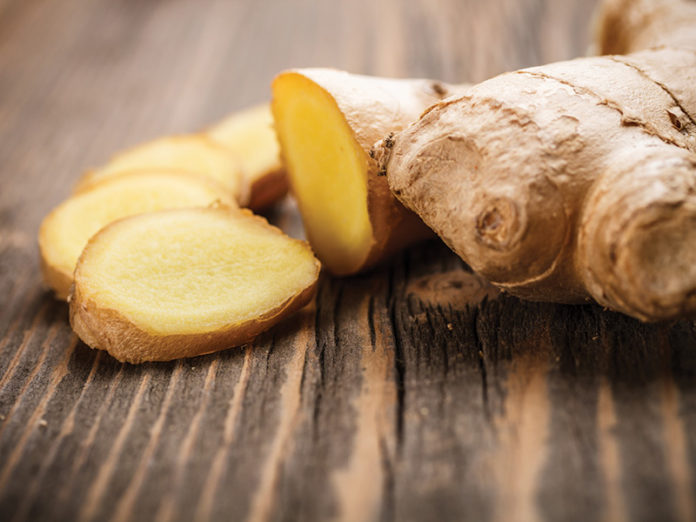
Before popping a pill to treat muscle pain, you may want to consider evidence backing the benefits of taking ginger instead – the same ginger you use to spice up your culinary creations.
Not only is the herbaceous perennial “prized for its anti-nausea properties” (ie: exercise-induced nausea), but it’s also touted for its pain-prevention powers, says Dr. Michael Greger, an acclaimed international speaker who specializes in clinical nutrition.
“Overall, ginger extracts such as the powdered ginger spice you get at any grocery store were found to be clinically effective pain-reducing agents with a better safety profile than drugs,” Greger says. The most common adverse effect of taking drugs, like aspirin or ibuprofen-type pills, for muscle pain is gastro-intestinal cramping. Ginger, Greger says, may improve gastrointestinal function. Citing at least eight randomized, double-blinded, placebo-controlled trials of ginger used for pain caused by everything from osteoarthritis to irritable bowel and painful periods, the physician says it is an alternative to the go-to drugstore options.
Unlike pharmaceuticals, however, ginger cannot be taken just prior to intense exercise.
“Put all the studies together and a single dose of ginger doesn’t appear to help, but a teaspoon or two each day for a couple of weeks in a pumpkin smoothie (for example) may help to reduce muscle pain and soreness and accelerate recovery of muscular strength,” he says.
While fresh is preferable, powder might be the way to go because dried ginger contains more shogaol – likely the most potent of several compounds in the plant root.
Either way, daily consumption of ginger – raw or heat-treated – can result in moderate-to-large reductions in muscle pains, according to studies cited by the doctor.
Log onto www.nutritionfacts.org for more health findings from the physician, speaker and New York Times best-selling author.
















